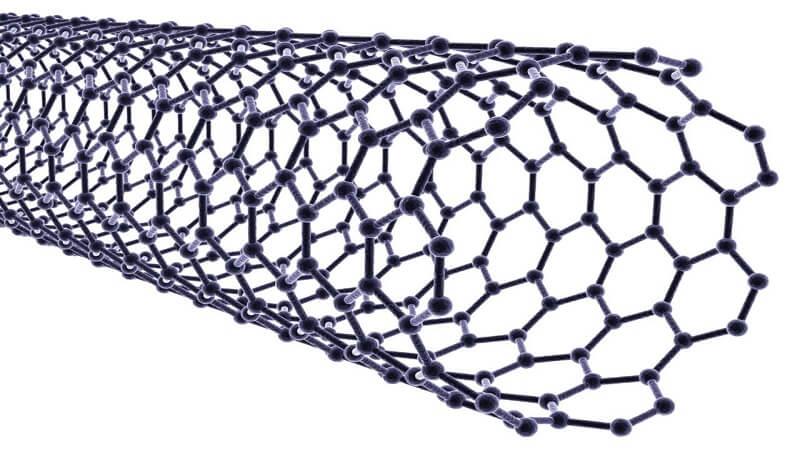SWCNTs represent hollow carbon tubes that exist at a nanometer scale. The single sheet of their carbon structure uses hexagonal carbon networking. The strengths and conductivity together with thermal endurance characterize SWCNTs as a material. Their valuable properties enable many industrial uses.
Structure of Single-Walled Carbon Nanotubes
The production of SWCNTs occurs when graphene material swirls into vacuum-shaped containers. The framework of chirality decides whether SWCNTs operate as metals or semiconductors. Chirality and Electronic Properties. The electronic properties of zigzag SWCNTs exist either as metal or semiconductor materials. The particular structure of single-wall carbon nanotubes determines their unique behavior pattern. The diameter range of SWCNTs extends from 0.4 nanometers up to 2 nanometers. The tubes exist in lengths that exceed several micrometers.
Properties of Single-Walled Carbon Nanotubes
SWCNTs show exceptional mechanical properties. As well as electrical properties combined with thermal capabilities.
The industrial demand for SWCNTs exists because of their distinct properties.
- Mechanical Strength
- SWCNT’s mechanical strength is equal to 100 times the strength of steel.
- The materials present high strength levels despite their light weight.
- SWCNTs have a Young’s modulus value that reaches approximately 1 terapascal.
- Electrical Conductivity
- The electronic transfer between SWCNTs produces no resistance.
- SWCNTs function either as semiconductor materials or conductive substances.
- Thermal Conductivity
- At room temperature, SWCNTs conduct thermal energy at a rate of 3500 W/m·K.
- SWCNTs function excellently, as efficient heat conductors for electronic items.
- Optical Properties
- The optical properties of SWCNTs depend on the type of their chirality structure.
- They absorb light strongly.
- Chemical Reactivity
- SWCNTs are chemically stable.
- SWCNTs are available for modification via functionalization procedures.
- The functionalization process enhances SWCNTs’ use for medication delivery and composite systems.
Applications of Single-Walled Carbon Nanotubes
Single-walled carbon nanotubes (SWCNTs) serve many applications because of their exceptional properties.
- Electronics and Nanoelectronics
- SWCNTs serve as components for field-effect transistors to speed up computer processing.
- The production of transparent conductive films.
- Improves the energy capacity of storage cells including batteries and supercapacitors.
- Biomedical Applications
- Scientists use SWCNTs for medicine-based treatments of cancer and pharmaceutical delivery systems.
- Through SWCNTs, physicians can get vital information for medical diagnostic purposes.
- The application of SWCNTs leads to biocompatible scaffolding structures for building tough tissues.
- Energy Storage and Conversion
- SWCNTs enhance the absorption of light by solar cells.
- SWCNTs serve in the storage of hydrogen fuel for sustainable energy applications.
- Composite Materials
- SWCNTs improve the mechanical characteristics of both polymers and metals as well as ceramics.
- SWCNTs enable their use in aerospace industry products and automotive components.
- SWCNTs enable the production of products that are strong yet lightweight.
- SWCNTs enhance the functionality of tennis rackets. And bicycles together with the implementation of sports equipment.
- Sensors and Environmental Applications
- The high-performance medical and environmental detection equipment.
- These materials exhibit both high sensitivity and operational effectiveness.
- Water purification systems deploy SWCNTs to get contaminants from water.
- SWCNTs have many applications in air filtration systems.
Challenges and Future Prospects
- SWCNTs encounter economic difficulties in their manufacturing process.
- Scaling up production is difficult.
- Many doubts persist about their safety protocols for biomedical implementation.
- Scientific experts focus on making progress with production practices. And safety testing for SWCNTs.
- SWCNT research focuses on producing versions suitable for commercial markets.
- The upcoming technology relies on SWCNTs for their performance in various applications.
Conclusion
SWCNTs deliver first-rate mechanical properties together with electrical properties and thermal properties. SWCNTs serve applications in healthcare and electronics. And do energy storage and materials science use. Scientists continue their work to address the present scientific barriers. Modern technological advancement continues to advance through SWCNTs.
